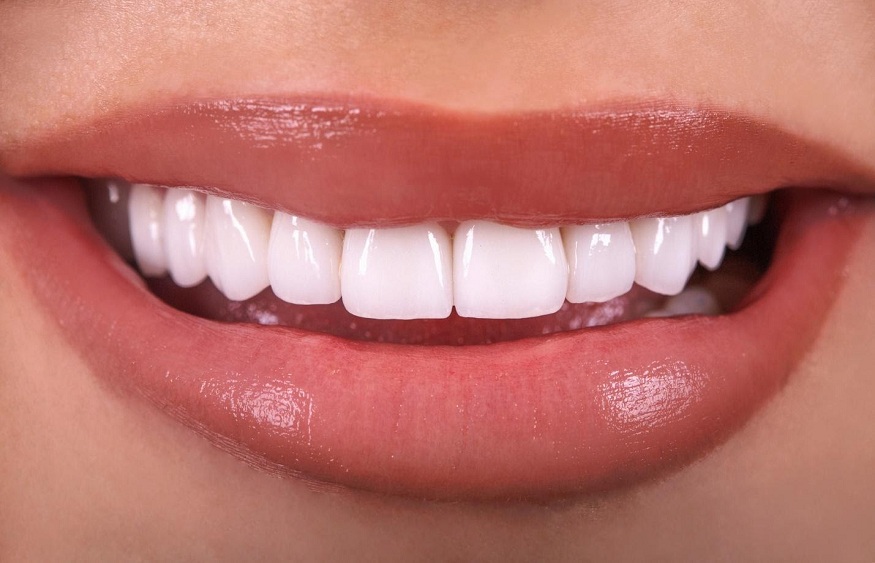Dental veneers are generally applied to the front surfaces of the teeth, and the covering material that will be used varies depending on the loss of substance and deformation of the teeth. The coverings are made by taking patient measurements and are custom-made.
What are laminate veneers?
Laminate veneers, also known as porcelain veneers, are esthetic veneers applied to the front surfaces of teeth. To apply these veneers, no or very little abrasion is done on the teeth. Thus, healthy dental tissues are preserved. Laminate veneers, which are designed in a very fine structure, cover only the front surfaces of the teeth and, in some cases, the incisors as well.
Who can have laminate veneers?
Laminate veneers can be applied to anyone who has completed tooth and jaw development and is unhappy with the appearance of their teeth and smile. We can list the situations where laminated veneers are needed as follows;
Lamina veneers are made from high strength porcelain. Therefore, they are extremely resistant to abrasion. However, due to their thin structure, they are more sensitive than metal-backed porcelains that surround the entire tooth. For this reason, it is not recommended to apply them to the posterior teeth where the chewing force is felt to be high.
If necessary, gingival treatments, cleanings and teeth whitening treatments are applied for teeth where laminate application is not planned.
If there are cavities on the teeth to be treated, they are cleaned.
If there is a disproportion in the size of the gums or other cosmetic problems, they are corrected by minor surgical procedures before laminate applications.
Photographs and x-ray are taken to determine the condition before the procedure.
A temporary application is made to the teeth with the composite material, and the image that will emerge at the end of the treatment is presented to the patient. At this stage, the teeth are not damaged.
If the patient has other aesthetic expectations in the planned teeth, they are included in the planning.
The temporary application is removed from the tooth. If necessary, a very small amount of abrasion is made to the teeth using special burs.
The models are obtained by taking visual images using a 3D intraoral scanner. The digital impressions are sent to the laboratory for design and production of laminate veneers. Thus, laminated veneers are made, measuring the teeth with special impression materials.
In this method, the porcelain is treated on the models created by the measurements taken, and since the technician is involved in the production phase of the coating, it is possible that the treatment takes several sessions,
The created laminate coverings are repeated in the patient’s mouth; If there is no problem, they are bonded to the tooth surfaces with special processes called adhesive methods.
It is the most efficient and precise method known for creating laminate veneer.
The color of the teeth for which the procedure is not planned is determined and the colors of the laminate veneers to be made are decided.
What are the obstacles to having laminated veneers?
In cases where there is excessive crowding in the front teeth, laminate veneers may be insufficient and orthodontic treatment may be necessary first.. In patients with excessive tightening issues, it is recommended that the tightening or grinding issues be resolved before beginning laminate veneer procedures.
Chrome-nickel or chrome-cobalt alloys, which are extremely durable, are typically used in the metal substructures of porcelain veneers.
Zirconium (zircon, zirconia) is a transition metal discovered in the 18th century. From aerospace to military, zirconium is used in many fields. Due to its corrosion resistance, zirconium is a preferred metal in many types of fields. Zirconium is white and permeable and therefore it is best used in dentistry as the basis for zirconium-ceramic crowns.
Various crown materials are used in dentistry to provide a natural and aesthetic appearance to patients. The Emax crown is made from firing ceramic without the use of metals for its natural color and durability. This ceramic material, which combines resistance and beauty, is one of the aesthetic materials that dentists often prefer because the absence of metal and the high transmission of light provide better results.
How are Emax crowns prepared?
After the tooth examination, patients and the dentist discuss which teeth are suitable for E-max crowns. Once the decision is made, a digital impression of the patient’s teeth is made with an intraoral camera to be transmitted to the computer which controls the drilling. Then the shade of the crown is matched to the natural teeth. Finally, the dentist places the Emax crown on the tooth and applies final adjustments. The total time spent on this procedure varies from person to person.

